A Freedom of Information request has brought to light the delayed implementation of the Air Collision Avoidance System (ACAS) in the F-35B aircraft.
A document attached to the FOI request, a 2021 Air System Safety Case – Safety Statement for Lightning, details that the introduction of ACAS, initially set for 2024, has been pushed back to 2028 for Manual ACAS and 2029 for Auto ACAS.
“F-35 Air Collision Avoidance System (ACAS) was scheduled for introduction into service in 2024. Although ACAS is regarded as a high priority by the UK, the US Services (and therefore the F-35 Programme) regard it as very low priority and it has recently been deferred. Forecast integration dates are now Jan 2028 for Manual ACAS and Jan 2029 for Auto ACAS.”
The document also states:
“I am content that the Air Safety Risks to Life (RtL) associated with the routine operation of Lng are currently managed and mitigated such that they remain at least ALARP and Tolerable.”
The principle of ‘As Low As Reasonably Practicable’ (ALARP) dictates that risks should be managed to the lowest feasible level while remaining below the maximum allowable risk.
In a 2019 inquiry, Douglas Ross, Conservative MP from Moray, questioned the Ministry of Defence on how the F-35 Lightning aircraft complied with specific aviation safety standards. In response, Stuart Andrew, then Parliamentary Under-Secretary of State, stated, “The UK is, however, working with the US to develop an automated Air Collision Avoidance System for the F-35. Prior to this integration, we remain fully confident that the F-35’s advanced situational awareness enables it to operate safely.”
The delayed integration of ACAS raises questions about the continued adherence to this principle and whether the current measures without ACAS are sufficient to ensure the safety of the aircraft and its operators.


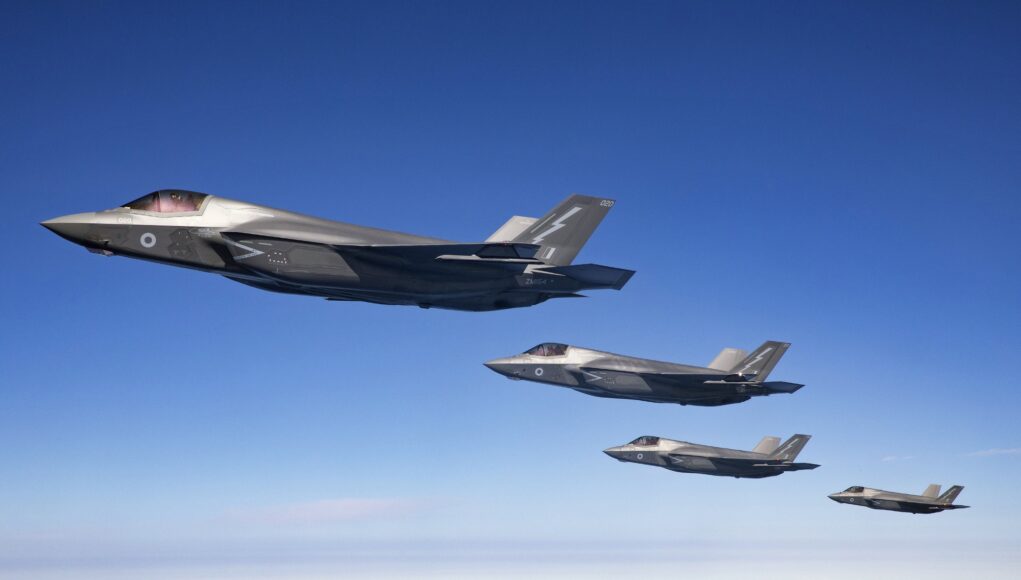
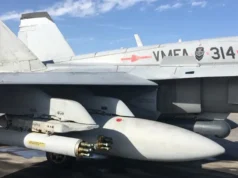

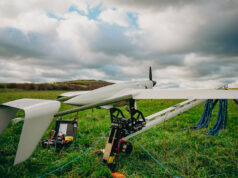
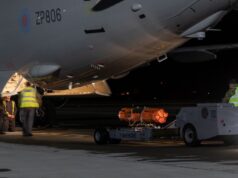

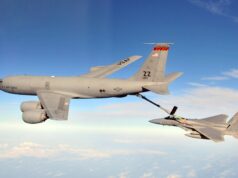
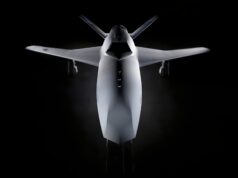

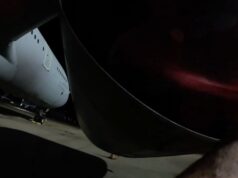
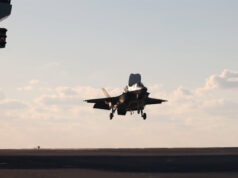

Just read an article in the telegraph saying a professor in York as realises a paper basically saying we should ditch domestic suppliers and just buy off the shelf from other countries. This is a perfect example as to why for our key defence needs that is bad. We are at the whims of what other countries think are priorities and if they don’t match up we are at the bottom of the list.
Buying foreign off the shelf certainly has its place but for key assets we should be pushing British products or at least working with partner nations on equal terms, not having one nation be priority other everyone else.
I completely agree, and when we do decide to go with British products they cost much more for a less. I guess this should be expected with not buying pre-tested products. With the whole British defence industry dominated by BAE it leads us to spend ever more because there’s no other company to turn to.
15% of all F35 sold are built here.
The trouble with buying British is that we have a long history of mismanaging large projects, which we then cancel after having spend £billions. We are spending about £50 billion a year on defence, look at the pathetic amount of kit we have for it.
I’m all for buying battle proven off-the-shelf kit, we would get far more bang for our buck
And the F-35 has been mismanaged by Lockheed and the Pentagon. Does AJAX count when it comes to poor quality when getting the first initial batch?
Not sure I still agree on F35, look what it delivers at a price that’s ridiculously low. The aircraft is massively higher spec than it was planned at the start of the program but the price is inline with initial projections.
Stick meteor on it and the new radar and it’s probably deadlier than an F22 in the air for like $80 million.
yeah but that the point isn’t it..we can’t so it isn’t.
JIM Meteor and SPEAR 3 integration are already funded and part of the F35B Block4 upgrade. We are not the only country having our own kit integrated by that Norway is as well. As for the F35B Radar why would you need to upgrade it ?
I think he’s referring to the fact that Northrop Grumman has gone and secretly developed an even more advanced radar for the F-35 that will go on all block 4 jets.
Current radar is amazing but the AN/APG 85 is an entire new level of amazing and it will be two generations beyond the AN/APG 77 on the F22.
Much of the kit on F22 is indeed archaic by modern technology standards and that’s the problem, the US is pandering. Do they spend a fortune on massively upgrading it to F35 standards or do they do the minimum required and wait for the Gen 6 replacements. It’s a problematical airframe but still towards the pinnacle of capability in the great order of things with lots of life potential in it and perhaps the biggest question is will the Gen 6 replacement in reality be (as promised) a far more reliable, upgradable and flexible platform.
Hello Jim,
“The aircraft is massively higher spec than it was planned at the start of the program”
But at what cost? not including the cost of installing the new engines when they finally arrive and where will we be in the queue for them?
FOC for Meteor/Spear 3? When? 2030s.
“We have been eating into the life of this engine since the beginning of the program because we did under-spec the engine and its requirements,” he continued. “We are building costs into this program by eating into the life of this engine with additional overhauls that are expected over the life of the program.”
“The original program engine specification allocated 15 kW [kilowatts] of bleed air extraction to support system cooling requirements, and the F135 engine was designed, tested, and qualified to this specification with a level of margin available for future growth,” Schmidt wrote.
“During the final stages of initial aircraft development, air vehicle cooling requirements grew to exceed planned bleed air extraction.”
“To provide the necessary bleed air, the engine is required to run hotter, and the program is realizing the effects of this through an increase in operating temperature, and a decrease in engine life, which is driving earlier depot inductions and an increase in lifecycle cost,” the written testimony adds.
So, “I also have a derived requirement for power and thermal management, because I’m running out of power at the end of Block 4,” Schmidt added when actually speaking during the hearing.
“Without upgrades, the addition of Block 4 capabilities will further degrade engine life and increase program lifecycle costs, because while the current TR-2 and TR-3 aircraft have sufficient cooling and power (while impacting the engine life as stated above), capabilities in Block 4 and beyond will increase cooling and power demands beyond current capabilities of the air system,” he elaborated in his written remarks.
LINK
The program’s cost reporting mechanisms do not fully explain the reasons for cost growth. For example, DOD’s reports to Congress on Block 4 cost growth do not distinguish higher-than-expected costs for previously planned Block 4 capabilities from growth due to adding new capabilities. Consequently, Congress does not have a complete picture of escalating F-35 modernization costs.
The program is exploring options for modernizing the F-35’s engine and thermal management system that is used to cool aircraft subsystems that generate heat.
The program plans to manage this multi-billion dollar effort under the existing program, which is scheduled to transition to sustainment soon and that would limit congressional oversight.
The cooling system is overtasked, requiring the engine to operate beyond its design parameters. The extra heat is increasing the wear on the engine, reducing its life, and adding $38 billion in maintenance costs.
GAO
Wallace decided that Ajax has turned a corner and recent posts on the Forces News YouTube channel show an initial batch of 4 being successfully tested by the Blues and Royals.
The initial batch – if they are accepted – will set the standard for the rest. We must wait a little longer to see if they have brought the quality up to an acceptable standard
Really ? They can’t build enough of them .
I agree on smaller more bespoke items off the shelf is fine especially if the countries we buy from also buy our off the shelf solutions. P8 is a good example as is E7. No point reinventing the wheel to procure a small number of platforms and UK MPA and AWACS domestic solutions were a disaster in the past.
I think it’s vital though that we continue to build warships and Fast Jet aircraft as well as armoured vehicles and artillery systems. Helicopter’s is a nice to have but not essential system for domestic production.
I think domestic drones is the real big one both at sea and in the air, we have the tech we just lack the will and these could be massive export earners.
Gulf countries that are short on people and big on budgets in particular will likely be very interested in these and we can do them as UK only content unlike manned aircraft.
Agreed for example the river joints have been a brilliant piece of kit and we didn’t have to waste 100s of millions if not billions designing a very specific peice of kit only a couple of nations would want in small numbers.
However let’s look at the eurofighter which yes does have problems but for every £1 spent on designing and building it how much has gone back into the treasury through all the different taxes it would go through. If we had just went screw it and bought the Rafale or F16 most of it would have left the country.
UK procurement and projects definitely need a shake up but I think the upside if building british for big projects outweigh the downsides.
We seem to think that only we have these problems, when they are endemic to advanced and particularly advanced military hardware. The US hardly ever gets a project to its goal efficiently or remotely near proposed cost despite their capabilities, budget, internal competitiveness and industrial base. Sadly it only seems like it’s us who through post Imperial navel gazing who as a result write off our National capabilities, worth and potential. At the top end, our technological capabilities are second to none despite our relative size. I fear while we run our Governance from a dilapidated Victorian edifice with 500 year old traditions taking precedence and sapping free thinking, it’s always going to be difficult to look to the future however.
Fast Jets.
Should be domestic or joint with others.
Drones/ UAV systems
Electronics/Avionics/Radar/Sonar
Munitions.
Missiles.
Engines.
Ships and ships systems especially.
Submarines.
Should all be domestic.
The rest, helicopters, transport aircraft, MPA, artillery, buy OTS.
I’d like Armoured Vehicles and Artillery to be domestic ideally, but governments seem to have eradicated that. If we can go on to rejuvenate home industry at a good price, then fine. Otherwise, OTS.
15% of the work, doesnt’ mean 15% of the profits or income. I haven’t seen any actual data behind the 15% outside polictical statements.
It’s 15% of the value built in Britain which makes sense as most British components are specialised high value components.
The major components in size will be RRs components on the B, and BAE’s rear fuselage on all F35s (the only fuselage component where that is the case), and the majority of vertical and horizontal tails.
Actually it’s more than 15% of the profits atleast on production. The US builds 15% but BAE also builds 15% due to its US defence subsidiaries. So UK PLC captures more than 15%.
Us subs pay profit in the US and not UK. Just because they have a head office in the UK doesn’t created extra value beyond the jobs there.
Also do you have any sources on that with figures?
Not saying its not true, I just couldn’t find any data to back up the 15% figures
That doesn’t counter the fact that in doing so we have allowed our requirements to be delayed based on the different priorities of the manufacturer -which is what the OP was alluding to.
That’s to some part to bad organisation at the MOD and drip feeding projects. It allows all projects to take a lot longer than necessary inflation and delay increase costs leading to cost cutting elsewhere. It’s going to get worse, note Hunts commitment to 2% of GDP no mention of a gradual increase to 2 and half % of GDP promised recently. Plans made by the MOD will have to now be altered. Cuts in projects inevitable, because that and training deployment is the only areas they can be made. Leading to problems with things like Tempest. By the time, if we do build it and its in squadron service ; China and the US will have fighters that surpasses it or at least it’s equal.
The problem with blaming the politicians for the MoD’s appalling record of incompetence, mismanagement and endless costly cock-ups is that it let’s them get away with it.
The headcount at the MoD has risen this year from ~62,000 to ~67,000. We never hear of a reduction in headcount do we? Empire building is alive and well in the MoD
Stimulating the economy is also paramount. But hey, why create another generation of engineers?
I see your point. Meanwhile, we just buy projects that have just as much of a dismal development record and degenerate our capabilities and skills. Cool. Don’t get me wrong, I want success for Tempest, but it’s worrying when we have certain parties cancelling projects and politicians getting involved.
I think tempest only fails if Japan pulls out, like AUKUS it’s too big a deal for HMG. £15 billion over 10 years is chump change for a government that spends £30 billion a day. Labour won’t ever allow UK aerospace plants to close nor will the Tory’s.
Other items in defence spending will take a hit especially if tempest ends up being too expensive but they will sacrifice other capability to get it done.
If Japan pulls out different story but then we just buy more F35 and drones.
The fact that UK, Italy, Japan are all nations with similar needs, and besides that, also that UK and Italy have currently similar jets delivered with similar timelines makes the GCAP a strong program. Good to be free from the French needs of a CATOBAR version or the German indecisiveness or the American everything. I think GCAP will be a success.
I have always found that we tend to deliver projects much better when we are working in a partnership. For some reason it tends to deter deter civil service dithering, Political tinkering and keep us on track.
When left to our own devices however it tends to go er Pear shaped.
Labour won’t ever allow UK aerospace plants to close. Who do you think destroyed the aerospace industry in the sixties and seventies? BUT…in the end I would rather buy the right equipment than worry about it’s source. If our companies are best buy it , if not go abroad.
Different story now, if you close Warton you close an entire industry. The UK aerospace plants and companies in the 60’s needed some major rationalisation.
You hope 😉
Warton isn’t the only aircraft factory. All Airbus wings are produced in the UK in Broughton, Belfast and Filton. Samlesbury still has an assembly line for the aft fuselage on F35 etc.
When Brough closed a few years back barely anybody batted an eye. Warton manufactures parts for other aircraft as well so wouldn’t close.
The issue with rationalisation is exemplified in BAE. Both Hawker Siddeley and BAC could’ve remained separate when they were merged and nationalised. After a long list of decisions made by BAe, Britain went from Concordes first flight in 1969, to not producing any commercial aircraft in 2001.
I think the more likely scenario will be the European 6th Gen and Tempest projects will be amalgamated.
However at the moment we “ appear” to reasonably harmony within Tempest but if we go by past history , getting in bed with the French and the Germans could be very problematic .
The Germans tried to derail Typhoon every two months.( or it seemed like it). Maybe the Germans attitude to defence has had a wake up call since Ukraine.
The French when they were part of eurofighter wanted the lions share of the development and construction , it was only after they got NO in English, German Spain and Italian, they took the huff and developed Rafale.
Right now I am very happy Tempest does not include either France or Germany but shear cost may force a rethink.
Both Italy and Britain don’t want France, and the recent fiasco with Typhoon means they won’t want Germany. Japan doesn’t want more countries in the project and nobody wants their workshare diluted anymore. It just won’t happen.
Agree. At the moment we are three with skills and attitude to get the job done. That will do.
There’s one more aspect. France and Germany won’t end well, 110%. Needs are different, and attitude don’t make me start. France will go alone and Germany will knock at GCAP, bringing much needed funds. The hope is that it will happen as late as possible, when as much as possible is crystal clear and decided
Agree. They’re in trouble already. The problem is do we trust the Germans either? Their involvement in Typhoon has been troublesome since the start.
Can you show me a country where that’s not the case? Every manufacturing country on earth uses defence to create jobs. Being able to sell Allie’s weapons is also a major power tool, indeed probably the main thing that sets great powers apart from the rest.
Just ask Argentina what UK sanctions will do to your Airforce.
You’ll get F16s?
Drones are the investment of the future – don’t like them, can’t quite get them – SLR / GPMG myself, but, drones are the future; we just need data scientists / algorithm munchers to lead us into the new Century.
You’ll get very old second hand F16’s a decade after most of your Airforce got grounded.
Well said, every Country that can do so is trying to get industrial alliances that gain them defence infrastructure, work share and ultimately on shore design, technology and production independence. Above all it’s a way of developing technology that infiltrates into its industry generally. There seems to be a lot of blindness here regarding that cross over and indeed the cross over between the military and the Universities. The Ai programmes that so many shout about in respect of Taranis and now Magma is a joint programme between Bae and the University of Manchester which of course has a history of working on advanced technology, much of which would not happen without a military dimension.
There are some fundamental problems with how the government had cut education that is stopping engineers. There are plenty of jobs for them and not enough getting trained. Buying more home grown military kit or not won’t solve that.
Remember when I was a teen it was so often lamented that an Engineer in Japan was seen as being top of the pyramid, an engineer in the UK was seen as a top end blue collar worker. Belatedly all these years later we see the problem with that pompousness much instigated by an education system that much prefers lathering about the classics to getting one’s hands dirty.
200 a year new apprentices going through the RR Nuclear school of excellence here in Derby. Says it all !
British kit is really good as well when it’s 10 years past development and has hot production lines.
Yes value for money is very important and I’m not against buying off the self. For example buying small numbers of very specific kit as I said in my reply to Jim the river joints are one great example of this.
I’m currently food shopping so I’m just going to repeat what I said to Jim again. For every £1 spent on the design and manufacture of the eurofighter (which yes does have some big problems like Germany saying who we can sell to) how much have we got back in tax through the company and the people it’s employed. Compare that to buying the F16 or Rafale the majority of the money would have left the UK not to be seen again. To me that’s better value for money especially as it helps grow the economy which should lead to a bigger defence budget.
Yes UK procurement and project management definitely needs a kick up its ass but so does every countries. Not many big military projects arrive on time or budget.
I think the trouble is, the UK would not have been able to have a 5th generation STOVL aircraft, and Tempest. The industry isn’t large enough. Ultimately, Tempest is the air superiority fighter that replaces Typhoon so is more valuable than F35B when it comes to protecting the UK which is the base that the armed forces need to be capable of, therefore it’s more crucial to get weapons systems like Meteor on it.
Britain does manufacture 15% of each F35. The aft fuselage section is one of the only sections on the aircraft that’s built in one place. Most of the rest are built in multiple different locations.
It is a shame that final assembly for F35 wasn’t agreed upon here though.
Tempest doesn’t exist anymore… it’s GCAP now and it is as British as Italian and Japanese
It’s part of GCAP now, but the aircraft is still called Tempest.
The aircraft is definitely not just as much Italian as it is British or Japanese and that will of course be reflected in work share.
Indeed and as Tempest translates more or less into various Japanese fighters of the past I suspect there’s a good chance one of those variations might creep into their version, after all their F16 derivative has become Viper Zero. The Japanese programme used the name Shinshin however so don’t know if they will stick with that, time will tell.
As for ‘as much this or that’ Leonardo will be responsible mostly for electronic systems within the actual design. It will be interesting to see how the Anglo Japanese split occurs tbh. Not clear where Japanese fighter design might have more to offer than what Bae can offer in terms of design, structure, aerodynamics due simply to matter of years of hands on experience, so electronics, complex sub systems, modularity and advanced construction techniques might be their major advantages I suspect. They and Leonardo have already set up joint electronics programmes. To a degree however it’s about Japan attaining the independent skills to develop such an aircraft which is why they, in the end rejected the US option so the basic core of the design will no likely remain with Bae with Japan inputting, adding to and personalising and modifying where it suits and where they can add expertise.
F-35 wasn’t bought off the shelf, it was bought off the drawing board.
I guess with such small quantities of them, they rarely get to meet each other anyway. 😎
Anybody surprised? Thought not.
Most airliners don’t have an autopilot driven TCAS, only the very latest airbuses do. Why does the F-35 need it? The Americans look at UK requirements and cringe at how stupid they are.
When you have a joint venture different parties will bring different requirements. All parties really need to respect the views of others if the venture is going to be a success.
There isn’t much “Joint” in the venture with thousands of orders for the F-35 and 48 total from the UK. There are 13 customers with more orders than the RAF, why should LM prioritize a customer that is so small? It’s illogical. Even the Netherlands are buying more.
Even the Netherlands…😂Let’s try it another way – is there much respect for any of LM’s clients?
“Why does the F-35 need it?”
Because when they are in stealth mode, they can’t see each other! 😂
😄🥇
It’s not essential. It took years to get it on Typhoon. With the F35’s systems, Its understandable it’s low down the priority list
“F-35 Air Collision Avoidance System (ACAS) was scheduled for introduction into service in 2024. Although ACAS is regarded as a high priority by the UK, the US Services (and therefore the F-35 Programme) regard it as very low priority and it has recently been deferred.
Meteor/Spear FOC anybody??? Blk4 is currently scheduled for 2029 and the last production run is scheduled for 2035.
November 22, 2023 at 3:23 PM
“Assistant Secretary of Defense for Sustainment Christopher Lowman told Breaking Defense that negotiations on the performance-based logistics agreement with Lockheed are at an impasse.”
LINK
Only five years then. Nothing to worry about.